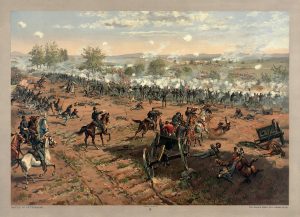Minnesota Facts

Hinrichs Hanger weekend
Minnesota makes up one of the richer, as well one of the more educated US states. Ironically, it also has some of the lowest unemployment rates in the USA, but some of the safest workplaces. Learn more with these 70 Minnesota facts.
- 01The state covers an estimated area of 225,000 km².
- 02Water makes up an estimated 19,000 km² or 8% of the state’s area.
- 03An estimated 5.71 million people live in the state today.
- 04This gives the state an estimated population density of 27 people for every km².
- 05At its lowest point on Lake Superior, the state has an elevation of around 183 meters above sea level.
Minnesota’s name has a history behind it.
It comes from the Native American Dakota language, specifically from the name they used for the Minnesota River. The Dakotas called it “mni sota”, meaning “clear blue water”, as well as “Mnissota” or “cloudy water”. This would also be the origin for the names of various places in Minnesota, such as Minnehaha Falls, meaning “curling water”, or simply “waterfall”. Even Minneapolis’ name shares this origin, mixed with Greek. Specifically, the Dakota word “mni” or “water”, and the Greek word “polis” or “city”.
The state also has various icons.
The state has the common loon as its official bird, the monarch butterfly as its official butterfly, and the walleye as its official fish. Minnesota also has an official state flower, the pink-and-white lady’s slipper, as well as an official state mushroom, the common morel.
It also has the Norway pine as its official state tree and milk as the official state beverage. The state has two different official state foods, with the Honeycrisp apple as the official state fruit, blueberry muffin as the official state muffin. It also has an official state gemstone, the Lake Superior agate.
It also has its motto in French.
In fact, Minnesota stands as the only US state which uses French for its official state motto. Specifically, L’Etoile du Nord, which means “Star of the North”, referencing Minnesota’s status as the northernmost US state at the time of statehood. Minnesota even retains that status today in the USA proper, with both Hawaii and Alaska separated by ocean and Canada from the rest of the country. Minnesota’s first governor, Henry Sibley, proposed the motto, which the state adopted in 1861, three years after statehood. The state motto also gives Minnesota its nickname of the North Star State, and features on the state’s official seal.
Minnesota has distinctive geography.
Minnesota’s Northwest Angle makes up the only part of the USA proper to lie north of the 49th Parallel. The state as a whole forms part of the USA’s Upper Midwest, in the Great Lakes Region of North America. In fact, Minnesota’s border with Michigan lies across Lake Superior. Wisconsin borders Minnesota to the east, Iowa borders it to the south, while North Dakota and South Dakota both border it to the west. To the north, Minnesota’s borders with Ontario and Manitoba form part of the US border with Canada. Overall, Minnesota makes up an estimated 2% of the USA’s total area.
Some of the oldest rocks in the world lie in the state.
The Canadian Shield extends into Northeastern Minnesota, which was mostly formed from lava flows around 2.7 billion years ago. The oldest and deepest rocks in the mountains go back even further, to around 3.6 billion years ago. This actually gives them an age of about 80% of the Earth’s own age of around 4.5 billion years.
Volcanic activity in Minnesota stopped around 1.1 billion years ago, leaving gentler processes to shape its features. These include glaciers during the Ice Ages, the latest of which left most of Minnesota’s lowlands into flat plains and low hills as a result of the glaciers pressing down on the ground. Southeastern Minnesota makes up the exception, accounting for its steep hills and deep ravines.
Eagle Mountain makes up the state’s highest point.
Located in Minnesota’s Cook County, it’s also included in the Boundary Waters Canoe Area Wilderness, as well as the Superior National Forest. This means that hikers must first get official permits before they can go up the mountain. Standing at a height of 701 meters, Eagle Mountain belongs to the Canadian Shield, making it one of the oldest mountains on the planet.
Interestingly, Eagle Mountain stands close to Minnesota’s lowest point, Lake Superior, with a distance of only 24 km between them. Whale Lake also stretches out along part of the mountain’s base, halfway along the hiking route to and up the mountain.
Over 11,000 lakes lie in the state.
This gives the state another one of its nicknames, the Land of 10,000 Lakes. These lakes are very large, with most of them not going below 40,000 square meters in area. The state also has the largest portion of Lake Superior within its borders compared to any other state, at an estimated 4000 km².
In addition to lakes, Minnesota also has over 6,000 rivers with a total estimated length between them of 111,000 km. These include the Mississippi River, which actually starts its long journey in Minnesota, before crossing into Iowa over 1,000 km to the south.




